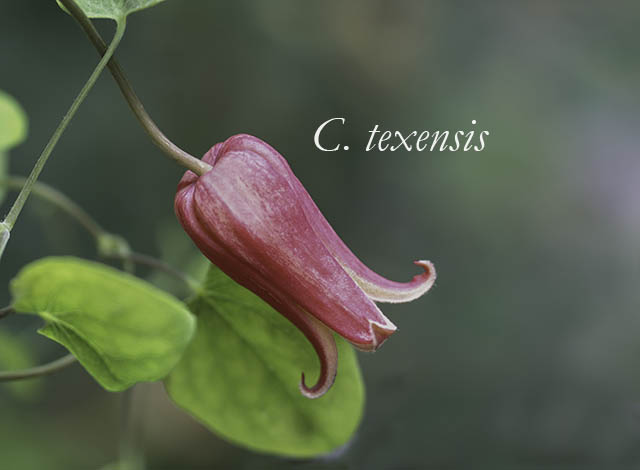Clematis are equipped with leafstalks which are called petioles (pronounced PET-ee-oles). These small stalks unite the leaf blade to the stem. Clematis use these petioles to cling to a support as they journey towards the sun. Petioles behave more or less like tendrils in that they coil around anything slender that they encounter. In my opinion the petiole’s grip is not a death grip as are tendrils’. This ability to attach also protects the clematis from being damaged by the wind.
Even though Mother Nature has provided most clematis (there are a few non-clinging varieties) with this natural, self-supporting system, sometimes your clematis do not ramble in the direction you would like them to. I am sure that any of you that have been growing clematis know exactly what I am talking about. So, you must intercede and give them a helping hand or should I say you need to manually unattach the petioles and then reattach them to their support with some covered wire or twine.
My personal favorite product for attaching is Rebiga tie (https://secure.clematisqueen.com/content/attaching-your-clematis-style) because it is easy to use and looks very natural in the garden. In the past I have used it just as I would when using a twist-tie, meaning, as the name implies, that I just twisted the tie around the stem and the stake (or any other support structure I had been using). Ultimately I discovered that I could do something that would mimic the plant’s petioles which I have dubbed “coiling” (see picture above). It works wonderfully for smaller jobs, not to mention that it is very easy to remove and reattach as needed. It also allows for more freedom of movement as the stems grow. So, here’s hoping this helps make your garden a tangle-free one!
